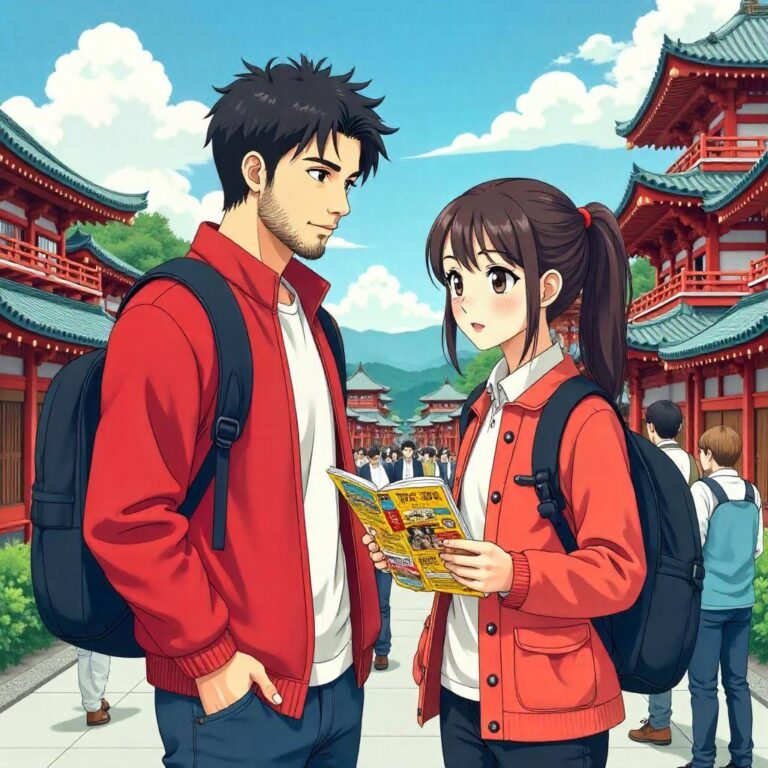Exploring Japan: A Comprehensive Travel Guide for First-Time Visitors
Japan, an archipelago of 6,852 islands, is a land where ancient traditions harmoniously coexist with cutting-edge technology. For travelers, this unique blend offers a wealth of experiences ranging from serene temples
to bustling cities, culinary delights to stunning natural landscapes. Whether you’re traveling to Japan for a few days or a few weeks, this guide provides actionable insights, practical advice, and insider tips to help you navigate your journey seamlessly.
Practical Logistics
Getting to Japan
Travelers primarily arrive in Japan through its major international airports: Narita (Tokyo), Haneda (Tokyo), Kansai (Osaka), and Chubu Centrair (Nagoya). Depending on your origin, direct flights from major cities worldwide are common, but connecting flights are also a viable option. Visa Requirements: Most travelers from Western countries do not require a visa for short stays of up to 90 days. However, it’s essential to check specific requirements based on your nationality before planning.
Transportation within Japan
Japan’s transportation system is one of the most efficient and reliable in the world, with various options catering to all budgets. – Rail Travel: The Japan Rail Pass is a worthwhile investment for those traveling between cities. It allows unlimited travel on most trains, including the iconic Shinkansen (bullet trains), for a fixed fee. Prices range from approximately ¥29,650 for a 7-day pass, offering savings for longer journeys. – Local Transport: Within cities, subways and buses are punctual and convenient. A prepaid Suica or Pasmo card can be used for seamless travel across different transport modes and can be topped up easily at vending machines. – Taxis: While taxis are available, they can be costly. They are best used for short distances or when public transport isn’t an option, especially late at night.
Accommodation Options
Accommodation in Japan varies widely, from luxurious hotels to traditional ryokans (inns) and capsule hotels. Here’s a breakdown of your options: – Luxury Hotels: Expect prices around ¥30,000 and up per night for hotels like the Park Hyatt Tokyo. – Mid-range Hotels: Average around ¥10,000 – ¥20,000 per night, options include business hotels like APA Hotels. – Budget Accommodation: Capsule hotels and hostels start at around ¥3,000 per night. – Traditional Ryokans: Staying at a ryokan can provide a unique experience, with prices ranging from ¥10,000 to ¥30,000, including meals.
Cultural Insights
Japan’s rich culture is steeped in history and tradition, influencing everyday life and social interactions. Here are some essential cultural insights for travelers:
Etiquette and Social Norms
– Politeness is Key: Bowing is a common greeting and shows respect. Always use polite phrases such as “Arigatou gozaimasu” (thank you) when interacting with locals. – Shoes Off Indoors: It’s customary to remove your shoes when entering someone’s home, ryokan, or certain traditional eateries. Look for designated places to store your footwear. – Dining Etiquette: When dining, it’s polite to say “Itadakimasu” before eating and “Gochisosama deshita” afterward. Don’t stick chopsticks upright in rice, as it resembles funeral rites.
Understanding Local Customs
– Omotenashi: This concept embodies Japan’s spirit of hospitality, where providers anticipate guests’ needs. Expect exceptional service everywhere, from hotels to restaurants. – Seasonal Festivals: Japan’s seasonal festivals (matsuri) are vibrant and colorful. If you’re visiting in spring, don’t miss the cherry blossom festivals. Summer features fireworks festivals, while autumn showcases stunning foliage.
Insider Tips
Hidden Gems to Explore
– Rural Adventures: Seek out towns like Shirakawa-go, known for its thatched-roof houses, or the hot springs in Kinosaki, which offer a more relaxed experience compared to bustling cities. – Local Food Markets: Visit Nishiki Market in Kyoto for an authentic taste of local delicacies, or Tsukiji Outer Market in Tokyo for fresh seafood and street food. – Onsen Etiquette: If you plan to visit an onsen (hot spring), remember to wash your body thoroughly before entering the communal baths and avoid using towels in the water.
Common Mistakes to Avoid
– Underestimating Travel Time: While Japan’s public transport is efficient, factor in transfer times, especially when traveling between cities. – Ignoring Local Customs: Small cultural nuances, such as not tipping and respecting quietness on public transport, can significantly enhance your experience. – Neglecting to Learn Basic Japanese Phrases: While English is spoken in major cities, learning a few basic phrases can endear you to locals and facilitate better interactions.
Budget Considerations
Japan can be perceived as an expensive destination, but with careful planning, it can cater to various budgets. Here’s a detailed cost breakdown:
Daily Expenses
– Accommodation: ¥3,000 – ¥30,000 per night. – Food: ¥1,000 – ¥5,000 depending on the meal type (convenience store meals to high-end restaurants). – Transportation: ¥1,500 (local transport) to ¥29,650 (Japan Rail Pass for a week). – Activities: ¥500 to ¥2,500 for museum entries, temple visits, or guided tours.
Saving Tips
– Eat at Convenience Stores: Japanese convenience stores offer high-quality and affordable meals. Don’t shy away from trying onigiri (rice balls) or bento boxes. – Free Attractions: Many temples and parks offer free entry. Walking around historical districts can also provide enriching experiences at no cost.
Timing Recommendations
Timing your visit can significantly affect your experience in Japan. Here’s a seasonal breakdown:
Spring (March – May)
– Cherry Blossoms: The breathtaking beauty of sakura (cherry blossoms) attracts tourists in droves. The ideal time to witness it is typically late March to early April.
Summer (June – August)
– Festivals and Fireworks: Numerous festivals occur in summer. However, be prepared for heat and humidity, particularly in July and August.
Autumn (September – November)
– Fall Foliage: Autumn brings vibrant colors, especially in November. It’s a great time for hiking and outdoor activities, along with harvest festivals.
Winter (December – February)
– Skiing and Hot Springs: Regions like Hokkaido offer fantastic skiing opportunities, while hot springs become even more enjoyable in cold weather. Winter illuminations in cities are also a sight to behold.
Step-by-Step Planning Advice
1. Determine Your Travel Dates
Check festival dates and seasonal highlights to enhance your experience.
2. Create an Itinerary
Decide on key cities (Tokyo, Kyoto, Osaka) and locations based on your interests (culture, nature, food).
3. Book Accommodations in Advance
Secure your hotels early, especially during peak seasons.
4. Get Your Japan Rail Pass
Purchase the pass before arriving in Japan to maximize savings on intercity travel.
5. Learn Basic Japanese Phrases
Familiarize yourself with essential phrases and greetings to break the ice with locals.
6. Pack Appropriately
Check the weather for your travel dates and pack accordingly. Comfortable shoes are essential for exploring.
7. Prepare for Connectivity
Consider renting a pocket Wi-Fi device to stay connected throughout your trip.
8. Keep an Open Mind and Embrace the Experience
Japan is a land of contrasts and surprises. Be adaptable and open to new experiences.
Conclusion
Traveling to Japan can be a life-changing experience filled with unique adventures. From the bustling streets of Tokyo to the tranquil temples of Kyoto, each corner of this beautiful country offers its own story. With this comprehensive guide at your side, you are well-equipped to navigate Japan’s culture, logistics, and hidden gems, ensuring an unforgettable journey. Embrace the adventure, respect local customs, and savor every moment—you are bound to fall in love with this incredible destination. Safe travels!



